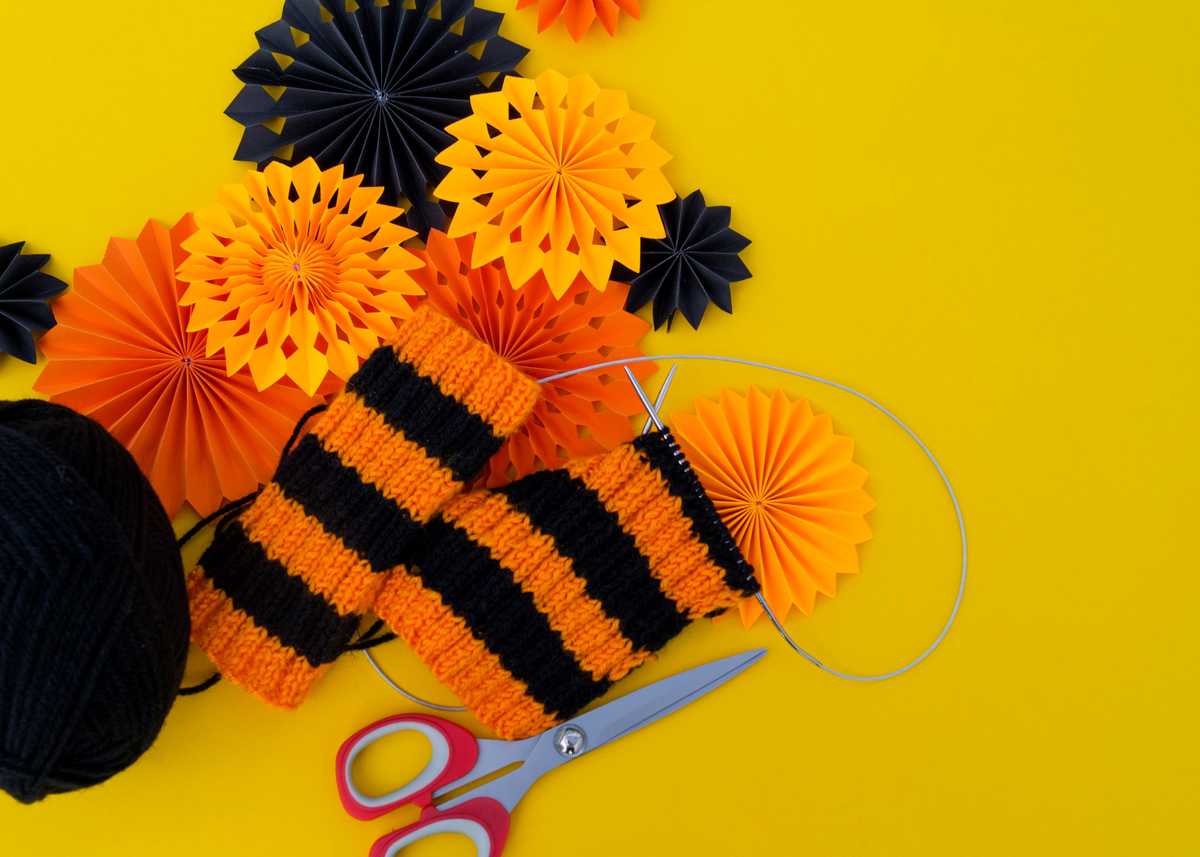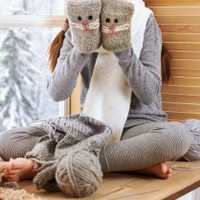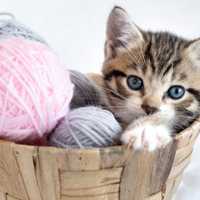Yarn Weights Plus Easy Knitting Suggestions
yarn weights plus easy knitting suggestions
Yarn Weights Plus Easy Knitting Suggestions
By J. M. Moore
Yarn Weights Plus Easy Knitting Suggestions
By J. M. Moore
Yarn used for knitting comes in MANY different varieties. The type of yarn you choose will depend on your pattern, your experience level, and even your budget. Yarn can be made out of many different materials such as wool, mohair, cashmere, alpaca, angora, silk, cotton, linen, acrylic, or any combination of those materials. For most easy knitting projects I would suggest using a simple acrylic yarn since it will be inexpensive and forgiving.
Once you have selected which yarn material you would like to knit with, the next step is to determine the weight of yarn you need. I am going to go into detail about the 6 different weights available which are defined and numbered according to the Craft Yarn Council of America (CYCA).
YARN WEIGHTS
CYCA 1 - Superfine: Also called fingering, baby, or 4-ply weight. This is very fine yarn that is suitable for knitting socks, lace, or baby garments.
CYCA 2 - Fine: Also called "sport weight". Fine yarn is slightly thicker than Superfine yarn but is still great to use for socks and baby clothing items.
CYCA 3 - Light: This classification includes DK (double-knitted) yarn which is roughly twice as thick as fingering yarn. Slightly thinner than worsted yarn this type is also sometimes called "light worsted" and is good to use for light garments.
CYCA 4 - Medium: Medium yarns include worsted, afghan, and Aran yarn. It is the most common weight and there are more kinds of worsted weight yarn than any other kind. It is useful in many different types of projects. Aran is just slightly thicker than worsted yarn.
CYCA 5 - Bulky: Bulky/chunky yarns are very thick and often used in heavier clothing items such as sweaters or thick gloves and scarves. If you use large needles and bulky yarn you can knit a project very quickly! Other bulky yarns include rug and craft yarns which we don't typically use in knitting.
CYCA 6 - Super Bulky: This type of yarn is almost rope-like, thicker even than bulky yarn, and used mainly only for heavy sweaters and jackets. Roving yarn is included in this classification. It is necessary to use large needles when knitting with any super bulky yarn. Projects will knit up extremely fast using yarn this thick!
EASY KNITTING SUGGESTIONS
-
As you are learning the beginner techniques of knitting (cast on, knit, purl, bind off), a medium (worsted) weight will be the easiest to work with. Thick enough to see what you are doing, but small enough that you can keep track of it and maneuver it on your needles.
-
Once you have the basic skills learned, I would recommend picking out a good bulky weight yarn and some large needles (#11 or higher). Find an easy knitting scarf pattern or just invent something on your own. With the thick yarn and needles this project will knit up quickly and you will be inspired and motivated by what you have accomplished.
-
Once you have finished your bulky project, move on to another easy knitting pattern but move back to the medium weight yarn. Some other easy projects are baby blankets, more scarves, hot pads, etc. and you will like the look of the worsted yarn on those. Since it's your SECOND project you can have a bit more patience with the completion time.
-
Always make sure to get the proper weight that your pattern suggests. If you can't find the exact yarn (i.e. Aran) at least make sure to get one that falls within the same classification (i.e. Worsted). Otherwise your pattern will not be sized appropriately.
-
If you decide to ever embark on a sweater project (there are some out there that are moderately easy) it would be a good idea to try it in super bulky yarn first, even if the pattern doesn't call for it. You can knit the sweater in a weekend using super bulky yarn and some large needles. If you are not super skinny the sweater might not look great on you, but it provides a good practice run for a more advanced project. Once you finished your trial sweater pick the weight that your pattern suggests and try again.
Please feel free to visit my Easy Knitting Blog at http://easyknitting.jodisworld.com to check out what I am up to with my latest knitting projects.
Article Source: http://EzineArticles.com/?expert=J._M._Moore
Yarn used for knitting comes in MANY different varieties. The type of yarn you choose will depend on your pattern, your experience level, and even your budget. Yarn can be made out of many different materials such as wool, mohair, cashmere, alpaca, angora, silk, cotton, linen, acrylic, or any combination of those materials. For most easy knitting projects I would suggest using a simple acrylic yarn since it will be inexpensive and forgiving.
Once you have selected which yarn material you would like to knit with, the next step is to determine the weight of yarn you need. I am going to go into detail about the 6 different weights available which are defined and numbered according to the Craft Yarn Council of America (CYCA).
YARN WEIGHTS
CYCA 1 - Superfine: Also called fingering, baby, or 4-ply weight. This is very fine yarn that is suitable for knitting socks, lace, or baby garments.
CYCA 2 - Fine: Also called "sport weight". Fine yarn is slightly thicker than Superfine yarn but is still great to use for socks and baby clothing items.
CYCA 3 - Light: This classification includes DK (double-knitted) yarn which is roughly twice as thick as fingering yarn. Slightly thinner than worsted yarn this type is also sometimes called "light worsted" and is good to use for light garments.
CYCA 4 - Medium: Medium yarns include worsted, afghan, and Aran yarn. It is the most common weight and there are more kinds of worsted weight yarn than any other kind. It is useful in many different types of projects. Aran is just slightly thicker than worsted yarn.
CYCA 5 - Bulky: Bulky/chunky yarns are very thick and often used in heavier clothing items such as sweaters or thick gloves and scarves. If you use large needles and bulky yarn you can knit a project very quickly! Other bulky yarns include rug and craft yarns which we don't typically use in knitting.
CYCA 6 - Super Bulky: This type of yarn is almost rope-like, thicker even than bulky yarn, and used mainly only for heavy sweaters and jackets. Roving yarn is included in this classification. It is necessary to use large needles when knitting with any super bulky yarn. Projects will knit up extremely fast using yarn this thick!
EASY KNITTING SUGGESTIONS
-
As you are learning the beginner techniques of knitting (cast on, knit, purl, bind off), a medium (worsted) weight will be the easiest to work with. Thick enough to see what you are doing, but small enough that you can keep track of it and maneuver it on your needles.
-
Once you have the basic skills learned, I would recommend picking out a good bulky weight yarn and some large needles (#11 or higher). Find an easy knitting scarf pattern or just invent something on your own. With the thick yarn and needles this project will knit up quickly and you will be inspired and motivated by what you have accomplished.
-
Once you have finished your bulky project, move on to another easy knitting pattern but move back to the medium weight yarn. Some other easy projects are baby blankets, more scarves, hot pads, etc. and you will like the look of the worsted yarn on those. Since it's your SECOND project you can have a bit more patience with the completion time.
-
Always make sure to get the proper weight that your pattern suggests. If you can't find the exact yarn (i.e. Aran) at least make sure to get one that falls within the same classification (i.e. Worsted). Otherwise your pattern will not be sized appropriately.
-
If you decide to ever embark on a sweater project (there are some out there that are moderately easy) it would be a good idea to try it in super bulky yarn first, even if the pattern doesn't call for it. You can knit the sweater in a weekend using super bulky yarn and some large needles. If you are not super skinny the sweater might not look great on you, but it provides a good practice run for a more advanced project. Once you finished your trial sweater pick the weight that your pattern suggests and try again.
Please feel free to visit my Easy Knitting Blog at http://easyknitting.jodisworld.com to check out what I am up to with my latest knitting projects.
Article Source: http://EzineArticles.com/?expert=J._M._Moore




